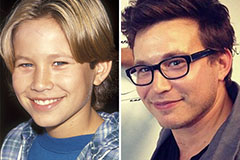The human sense of stability, often called the vestibular method, is a fancy sensory system that allows us to keep up security, orient ourselves in House, and coordinate movements. Stability is a thing we frequently take without any consideration right until it's compromised, however it is Among the most critical elements of human physiology, enabling us to stroll, run, stand upright, and complete day by day activities.sense of balance The sense of balance is governed by a number of techniques that operate jointly seamlessly, such as the internal ear, vision, proprioception, along with the central anxious technique.
With this detailed exploration, We are going to delve in the anatomy and function in the stability method, the function of various sensory inputs, the effects of harmony Ailments, along with the ways in which equilibrium is often experienced and improved.
The Anatomy from the Vestibular System
The vestibular procedure, Positioned inside the interior ear, is the key organ to blame for detecting alterations in head place and movement. It comprises two principal structures: the semicircular canals plus the otolithic organs. These constructions work along side the eyes, muscles, as well as the Mind to help you preserve equilibrium.
Semicircular Canals: You can find a few semicircular canals in Every single ear, oriented in different planes (horizontal, posterior, and remarkable) to detect rotational movements of The top. These canals contain a fluid named endolymph and are lined with little hair cells that work as sensors. When the head moves, the endolymph lags guiding slightly on account of inertia, bending the hair cells and triggering nerve signals which might be despatched towards the brain. This facts tells the brain in regards to the direction and speed of The top’s rotation.
Otolithic Organs: The otolithic organs encompass two buildings: the utricle and also the saccule. These organs detect linear movements, for instance up-and-down or facet-to-side motion, plus the posture of The pinnacle relative to gravity. The utricle and saccule include modest crystals identified as otoconia, which sit in addition to a gelatinous membrane that handles the hair cells. When the head moves or tilts, the otoconia shift, creating the membrane to move and bending the hair cells. This sends signals for the brain regarding the head’s orientation in relation to gravity.
Visual Input and Its Part in Harmony
Vision plays a vital part in stability by delivering the brain with visual details about the surrounding surroundings. Throughout the eyes, we have the ability to detect improvements in overall body situation, motion, and spatial orientation. The brain continuously integrates visual cues with information from the vestibular system to take care of a steady and upright posture.
One particular example of the importance of eyesight in harmony would be the sensation of dizziness or disorientation skilled when Visible enter is impaired. As an example, walking in the dark or remaining subjected to conflicting visual information and facts, like the sensation of movement although sitting in a very stationary motor vehicle, can result in inner thoughts of imbalance. In these predicaments, the brain gets complicated or insufficient visual information, which makes it more difficult to take care of equilibrium.
Proprioception: The Sense of Overall body Place
Another critical component with the stability process is proprioception, which can be the human body’s capability to perception its position and movement in House. Proprioceptive input arises from sensors situated in the muscles, tendons, and joints. These sensors, called proprioceptors, constantly ship information and facts for the Mind about the placement of your limbs, the tension while in the muscles, as well as movement of the body. This opinions allows the brain to produce changes to take care of equilibrium and posture.
Proprioception is essential for tasks that demand exact coordination, which include going for walks, reaching for an object, or sustaining posture even though standing. It really works along side the vestibular procedure and Visible enter to help the body respond to modifications in place or movement. As an example, when standing on one particular leg, proprioceptors from the foot, ankle, and leg detect shifts in pounds distribution, as well as Mind takes advantage of this information to make moment changes that retain your body upright.
The Central Nervous Method and Balance Integration
The Mind, significantly the cerebellum as well as brainstem, performs a vital function in processing and integrating the various sensory inputs demanded for equilibrium. The cerebellum is to blame for coordinating voluntary movements and ensuring that equilibrium is preserved for the duration of motion. It gets input in the vestibular procedure, proprioceptors, plus the eyes, and employs this details to good-tune actions, posture, and stability.
The brainstem functions like a relay center, sending indicators among the vestibular system plus the muscles that Handle posture and motion. It performs a critical position in reflexive actions that enable sustain equilibrium, such as the vestibulo-ocular reflex (VOR), which stabilizes eyesight by adjusting eye movements in reaction to move actions. This reflex enables us to keep up a transparent line of sight even although our heads are in movement.
If the brain gets conflicting or inaccurate information with the sensory units, it may end up in balance problems, dizziness, or vertigo. Such as, an individual which has a vestibular disorder could knowledge sensations of spinning or instability because the brain is obtaining incorrect indicators with the interior ear.
Preserving Stability In the course of Motion
The perception of balance is constantly at operate, allowing us to move easily and proficiently. Even uncomplicated steps, such as walking or standing, demand The combination of many sensory inputs. After we wander, By way of example, the vestibular system detects modifications in head place, proprioceptors inside the legs and ft supply opinions on limb placement and fat distribution, plus the eyes enable us navigate our environment. The brain processes all this facts in authentic-time to ensure that we keep on being upright and secure.
Far more intricate movements, like running, leaping, or dancing, area better demands on the equilibrium technique. These routines need rapid changes in posture and coordination, and any disruption inside the balance process can cause falls or accidents.
Harmony Problems: Causes and Signs or symptoms
Once the equilibrium technique is impaired, it can result in several different indicators, ranging from delicate disorientation to serious vertigo and problem walking. Harmony Problems is often attributable to complications inside the vestibular procedure, the visual process, or the proprioceptive technique. Many of the most common will cause of balance Issues involve:
Benign Paroxysmal Positional Vertigo (BPPV): This situation happens in the event the otoconia within the otolithic organs turn into dislodged and shift into the semicircular canals, in which they disrupt the conventional move of endolymph. This can lead to episodes of vertigo, dizziness, and nausea, particularly when The top is moved in selected positions.
Ménière’s Sickness: This can be a Continual issue that has an effect on the interior ear and is particularly characterised by episodes of vertigo, tinnitus (ringing in the ears), hearing loss, and a feeling of fullness within the ear. Ménière’s illness is regarded as attributable to an abnormal buildup of fluid while in the internal ear, which disrupts the operate on the vestibular technique.
Vestibular Neuritis: This affliction is a result of inflammation with the vestibular nerve, which carries alerts with the internal ear on the brain. Vestibular neuritis can lead to sudden, intense vertigo, dizziness, and imbalance.
Labyrinthitis: Labyrinthitis can be an an infection or inflammation on the internal ear that could cause vertigo, hearing decline, and imbalance. It is frequently connected with viral or bacterial infections and can lead to extensive-expression stability issues Otherwise appropriately handled.
Cerebellar Disorders: Harm to the cerebellum, no matter whether because of stroke, trauma, or degenerative diseases, can impair the Mind’s ability to coordinate actions and sustain balance. Individuals with cerebellar Problems may perhaps knowledge unsteady gait, tremors, and problems with great motor capabilities.
Getting older: As we age, the devices associated with harmony can deteriorate. Degeneration from the vestibular process, lowered Visible acuity, along with a decrease in proprioceptive sensitivity can all add to stability challenges in older Grownups. This is often a single motive why falls are more frequent during the elderly population.
Increasing and Training Stability
Harmony is not really a static capability—it may be experienced and enhanced via follow and Bodily conditioning. Athletes, dancers, and martial artists normally have interaction in workouts that increase their feeling of harmony, allowing for them to perform sophisticated movements with precision and Handle. For the overall populace, harmony physical exercises may also help reduce falls, improve coordination, and enhance General physical Health and fitness.
Some typical techniques for bettering balance consist of:
Balance Training Exercises: Simple routines, which include standing on just one leg, strolling heel-to-toe, or using a balance board, may also help strengthen proprioception and bolster the muscles associated with maintaining equilibrium.
Power Coaching: Building energy inside the Main muscles (abdomen, back again, and hips) is essential for protecting stability and stability. Physical exercises that target these muscles, which include planks, squats, and lunges, may help boost posture and reduce the chance of falls.
Tai Chi and Yoga: These mind-overall body methods deal with controlled actions, physique consciousness, and balance. Equally tai chi and yoga include slow, deliberate actions that obstacle the vestibular program and make improvements to proprioception, producing them effective kinds of equilibrium coaching for men and women of any age.
Vestibular Rehabilitation Therapy (VRT): For individuals with vestibular Ailments, VRT is usually a specialized kind of Actual physical therapy that aims to further improve balance and lessen dizziness. It will involve a series of workout routines built to promote habituation to vestibular stimuli, boost gaze security, and enrich postural control.
Conclusion
The sense of stability is actually a important nonetheless frequently disregarded facet of human physiology. It allows us to move from the earth with assurance, maintain posture, and carry out a wide range of routines. The intricate interplay in between the vestibular program, vision,

 Jonathan Taylor Thomas Then & Now!
Jonathan Taylor Thomas Then & Now! Dylan and Cole Sprouse Then & Now!
Dylan and Cole Sprouse Then & Now! Gia Lopez Then & Now!
Gia Lopez Then & Now! Hailie Jade Scott Mathers Then & Now!
Hailie Jade Scott Mathers Then & Now! Andrew McCarthy Then & Now!
Andrew McCarthy Then & Now!